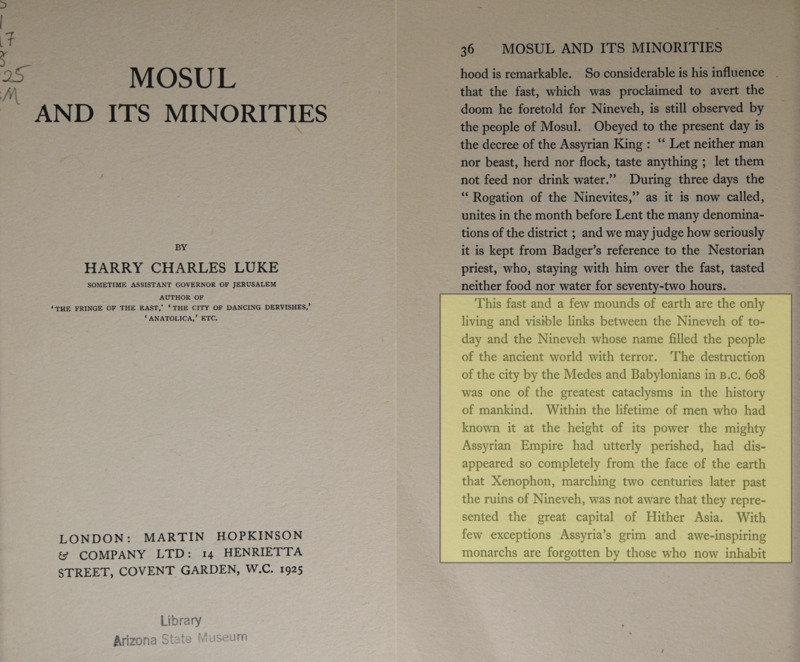-
Title
-
Mosul and Its Minorities
-
Creator
-
Sir Harry Charles Luke
-
Date
-
1925
-
Description
-
Sir Harry Charles Luke uses Mosul’s annual Fast of Nineveh to contrast a living memory with an obliterated past. He writes that apart from this fast and a few earthen mounds, there are no visible links between modern Nineveh and the terror-inspiring city of antiquity. The destruction of Nineveh in 608 BC by the Medes and Babylonians, he says, was so complete that within a single lifetime the Assyrian Empire had not merely fallen but vanished from the face of the earth. Two centuries later, Xenophon marched past its ruins without recognizing that they were the remains of the former imperial capital. Luke adds that, with rare exceptions, the fearsome Assyrian monarchs had been forgotten by the very people who later lived on the site. In his depiction, what survived in Mosul was a religious observance and archaeological remnants, not a continuing Assyrian people.
-
Language
-
English
-
Publisher
-
Sir Harry Charles Luke, Mosul and Its Minorities (London: Martin Hopkinson, 1925), p. 36.
-
archive.org


